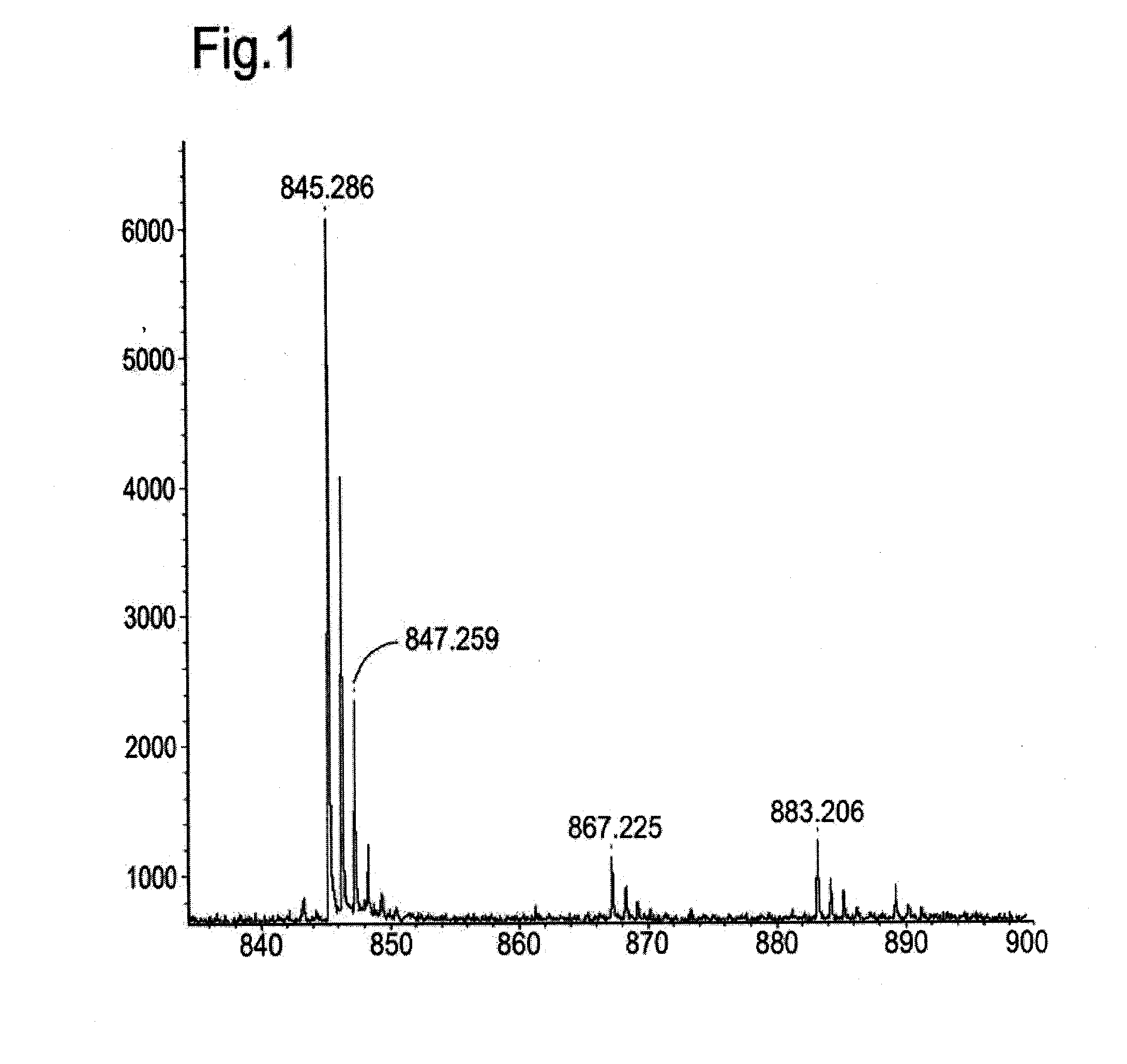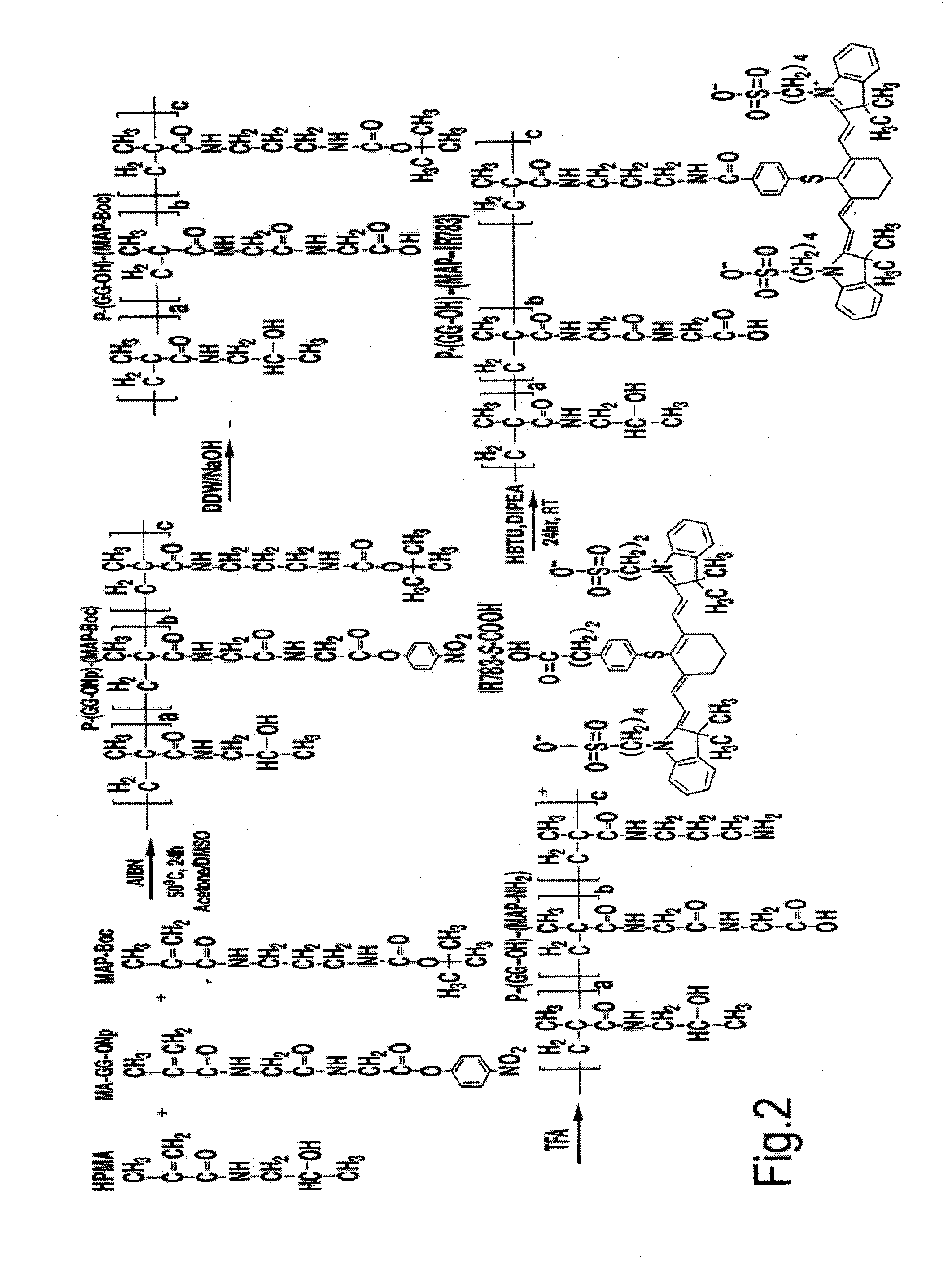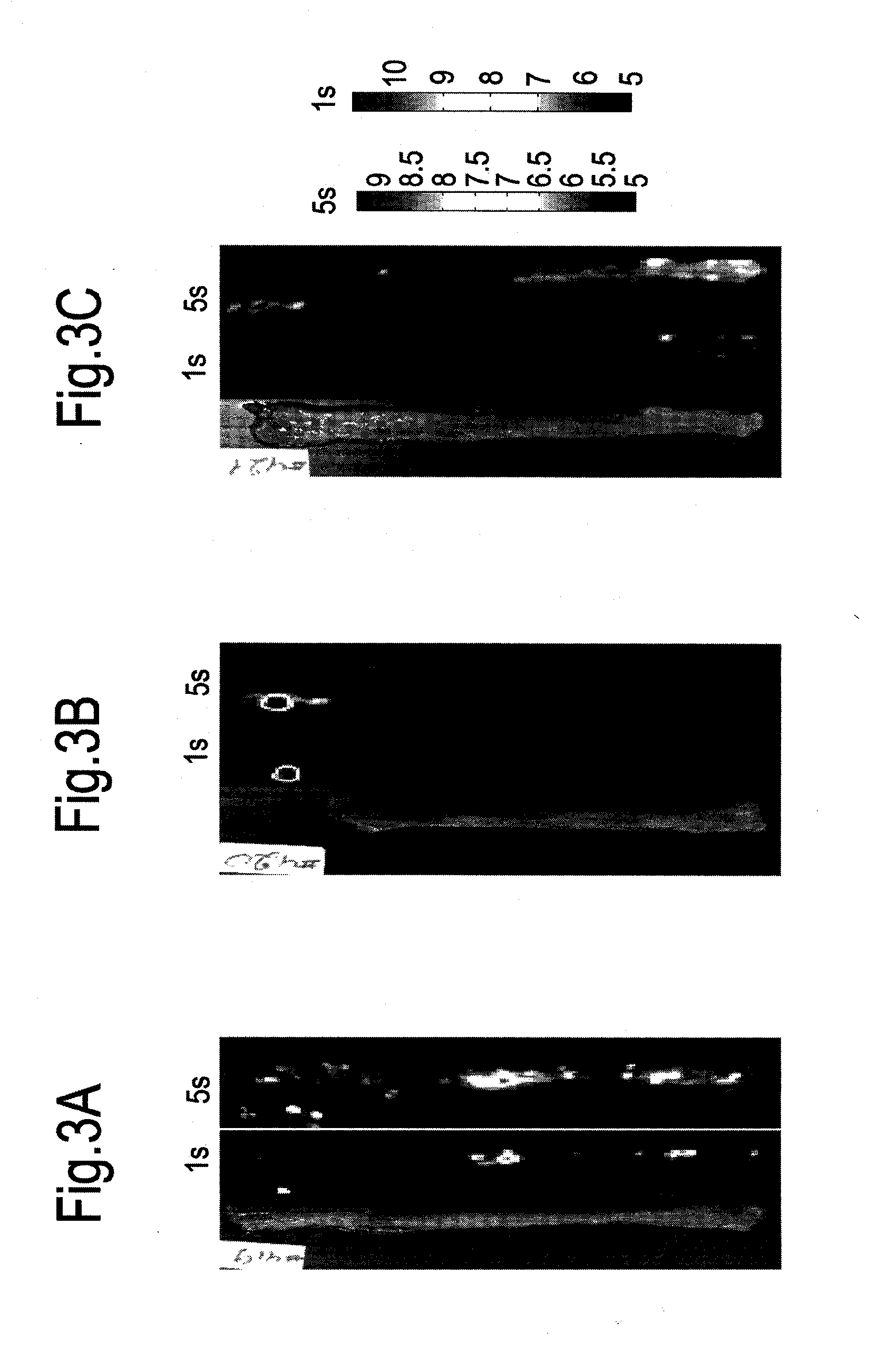Diagnostic agents with enhanced sensitivity/specificity
a technology of chromophore and diagnostic agent, applied in the field of diagnostic agent, can solve the problems of large volume of distribution, low target/background ratio, and many limitations of conventional near infrared fluorescence probes
- Summary
- Abstract
- Description
- Claims
- Application Information
AI Technical Summary
Benefits of technology
Problems solved by technology
Method used
Image
Examples
example 1
Synthesis of Polymer Conjugates
Synthesis of IR-783 Dye with a Free Carboxylic Acid Group (IR-783-S-pH-COOH)
[0137]IR-783-S-Ph-COOH was synthesized based on a previously described procedure (Wang et al., Bioconjugate Chem., Vol. 18, No. 2, 2007) (see scheme 1 below). Briefly, IR-783 was conjugated with 4-mercaptobenzoic acid in DMF in the presence of DIPEA at 1:1:6 molar ratio. The mixture was stirred over night. The solvent was evaporated and the product was purified by silica gel column, mobile phase ethylacetate:methanol (1:1) and analyzed by MALDI. Yield: 92%,
[0138]FIG. 1 depicts the MALDI-TOF mass spectrometry results showing peaks at 845.3, 867.2 and 883.2, calculated for M+H+, M+Na+, and M+K+, respectively.
Synthesis of Synthesis of HPMA Copolymer Precursor for IR783-S-pH-COOH Attachment P-(GG-ONp)-(AP-Boc)
[0139]An HPMA copolymer precursor having aminopropyl-side chains for IR-783-S-Ph-COOH attachment (designated as P-(GG-ONp)-(AP-Boc), where P represents the HPMA copolymer back...
example 2
Selective Accumulation of Embodied Polymer-Conjugates within Cancerous Tissue Following Intra-Luminal Administration
Intraluminal Administration of the Polymer Conjugates to Mice Harboring Tumors in LS174T and HT29 Models
[0144]A 9.2% solution of P-(AP-IR783) in PBS was prepared according to Example 1 and administered intracolonically by colonoscopy to female athymic nude mice bearing rectal tumors following LS174T and HT29 cell injections. 4-week old lumen-facing LS174T tumors were anaesthetized and treated with P-(AP-IR783) solution in PBS (0.2 mg / ml), applied intracolonic with the guidance of a mini colonoscopy. 20 min later the colon was washed extensively with PBS and then were allowed to recover for 3 h. Then, the mice were sacrificed and the colons were removed. Each colon was spread on a clear film, and imaging was performed using the Odyssey® Infrared Imaging System (Li-Cor Biosciences, Lincoln, Nebr., USA.), with excitation wavelength of 780 nm and emission wavelength of 800...
example 3
In Situ Labeling Experiments in Human Colorectal Cancer Tissues
Application of the Polymer to Human Colorectal Cancer Biopsy Specimens
[0148]An aqueous solution (PBS, 0.2 mg / ml) of 9.2% P-(AP-IR783) prepared according to Example 1 was applied to surgically excised cancerous colorectal tissue, obtained from 3 patients [male] by informed consent at the Belinson Medical Center. Polymer solution was dropped onto fresh surgical tissue specimens that were received 15 minutes after surgical excision. After 20 minutes of incubation with the polymeric probe, tissues were washed three times with a large volume of PBS. Tissues were then imaged immediately using the Odyssey® Infrared Imaging System (Li-Cor Biosciences, Lincoln, Nebr., USA.) with excitation wavelength of 780 nm and emission wavelength of 800 nm.
Results
[0149]FIG. 5 presents selective markedly intense staining of the applied conjugate polymer at cancerous region in the tissue (polyp and tumor) with very low binding to near healthy t...
PUM
| Property | Measurement | Unit |
|---|---|---|
| Fraction | aaaaa | aaaaa |
| Fraction | aaaaa | aaaaa |
| Fraction | aaaaa | aaaaa |
Abstract
Description
Claims
Application Information
 Login to View More
Login to View More - R&D
- Intellectual Property
- Life Sciences
- Materials
- Tech Scout
- Unparalleled Data Quality
- Higher Quality Content
- 60% Fewer Hallucinations
Browse by: Latest US Patents, China's latest patents, Technical Efficacy Thesaurus, Application Domain, Technology Topic, Popular Technical Reports.
© 2025 PatSnap. All rights reserved.Legal|Privacy policy|Modern Slavery Act Transparency Statement|Sitemap|About US| Contact US: help@patsnap.com



